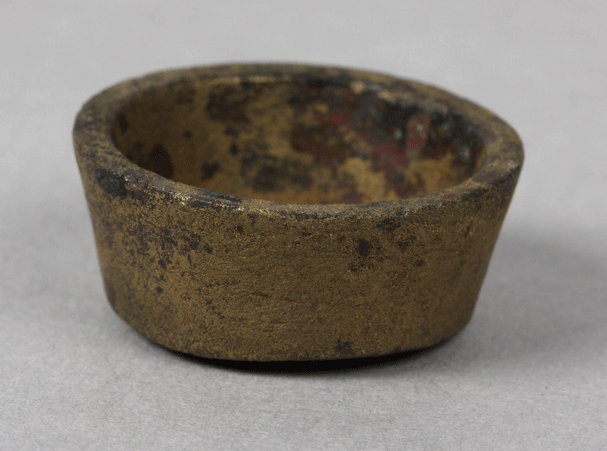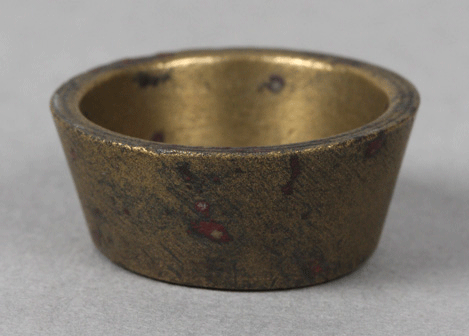

68.43.62, .73, nesting bronze weights; diameter of outer weight is
24 millimeters (1 inch).
San Gabriel de Yunque (A.D. 1598–1610)
UNM field school collection
Photograph by B. Bernard
In Spanish Colonial times, small goods were weighed on
beam balances, with the object to be weighed in one pan and standard
weights in the other. The weights were often designed as nesting
cups, with the outermost weight having a hinged lid, for ease of
of transport. A complete set from Spain can be seen
here.
Two weights found at San Gabriel are shown nested, above, and also
separately, below.


Left: outer weight. Right: inner weight.
Such careful measuring tools may seem out of place on such a remote frontier, but the first Spanish colonists expected to find great mineral wealth in New Mexico and a beam balance would have been useful for measuring out gold and silver. Besides, the colonists would have wished to duplicate, as much as possible, the life they had left behind—and that life included commercial weights and measures. As a final consideration, frontier life was regulated by the viceregal government in Mexico City, based on the Laws of the Indies, and that legal mandate included weights and measures. The next photograph, looking down into one of the nesting weights, shows the mark that certified that weight and indicated its amount.

68.43.62, bronze weight, showing the stamp
Photograph by B. Bernard
Help us build the content of this page! Please contact us about information you'd like to see, information you have, and anything else via the User Feedback link.
To return to the thumbnail on the San Gabriel page, please click here.
All content copyright © Maxwell Museum of Anthropology, University of New Mexico. A high-resolution verson of this photograph may be ordered from the Maxwell Museum's photo archives. Please make note of the catalogue number. For more information please visit the photo archives web page
Page last revised on September 10, 2009. Please report problems to toh@unm.edu